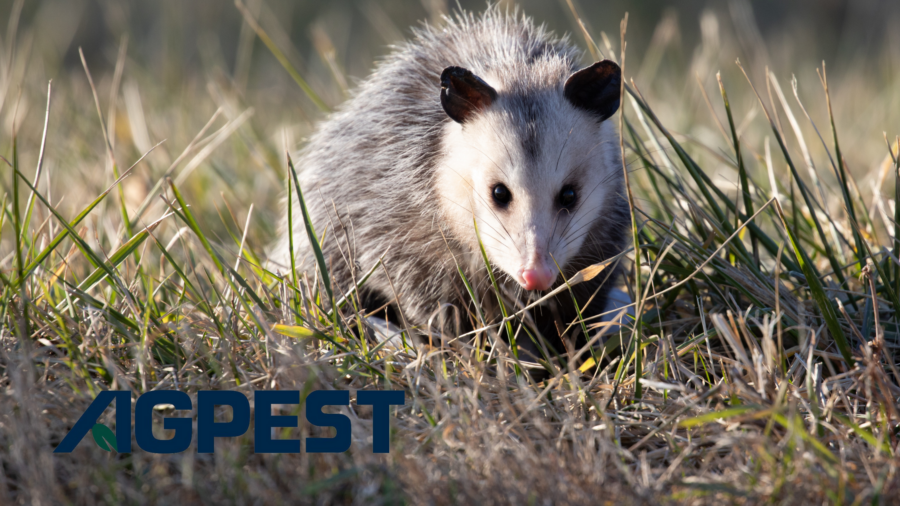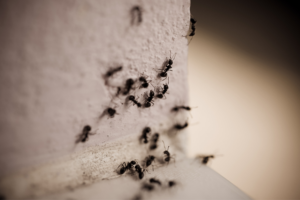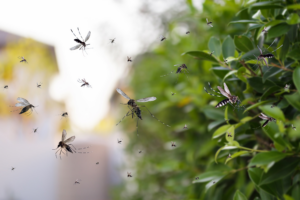As fall approaches, the wildlife in San Diego become more active, searching for food, shelter, and nesting areas. While the natural habitats of these animals are typically outdoors, the cooler months often drive them closer to human homes, creating potential hazards and nuisances. Understanding the types of wildlife commonly encountered in San Diego during the fall and how to manage them can help you protect your property and health.
Common Wildlife in San Diego
1. Raccoons
Identification
Raccoons are small mammals, recognizable by their distinct “mask” of black fur around their eyes and their ringed tails. They are usually nocturnal and can be seen foraging for food in trash cans, gardens, and other easy food sources.
Risks to Humans and Property
Raccoons are notorious for causing damage to homes. They can rip open garbage bags, tear shingles, and even break into attics in search of shelter. In addition to property damage, raccoons can pose a health risk as they are known to carry rabies, parasites like roundworms, and other diseases.
Prevention Tips
- Secure trash cans with tight-fitting lids.
- Block potential entry points like attics, vents, and chimneys with sturdy materials.
- Eliminate outdoor food sources like pet food and birdseed.
What to Do If a Raccoon Gets In
If you encounter a raccoon on your property, it’s best to avoid handling it yourself. Contact a professional wildlife removal company to safely relocate the animal. Raccoons can be aggressive if cornered, making it important to rely on expert assistance for safe wildlife removal near me.
2. Skunks
Identification
Skunks are small, black-and-white mammals best known for their potent spray. They typically have a distinctive white stripe running down their back, and their spray is a defense mechanism used when they feel threatened.
Risks to Humans and Property
Skunks are more of a nuisance than a threat. However, their spray can be difficult to remove from pets, clothing, and furniture. They also burrow under homes, decks, and sheds, causing structural damage. Additionally, skunks can carry diseases such as rabies.
Prevention Tips
- Seal off any gaps or entry points under sheds, decks, and porches.
- Use motion-activated lights or sprinklers to deter them from your yard.
- Secure trash and eliminate food sources that may attract them.
What to Do If a Skunk Gets In
If you spot a skunk in your yard, avoid startling it, as this may trigger it to spray. Instead, contact a wildlife control company that specializes in handling skunks. Professionals use humane traps and exclusion methods to remove skunks without causing harm.
3. Coyotes
Identification
Coyotes resemble medium-sized dogs with tan or gray fur, pointed ears, and bushy tails. In San Diego, they are commonly found in the brush, canyons, and suburban areas where they hunt for small animals like rabbits, rodents, and even unattended pets.
Risks to Humans and Property
Coyotes are primarily a threat to small pets and livestock. They may also rummage through trash, causing a mess. While attacks on humans are rare, they can become more brazen if they get used to being near homes.
Prevention Tips
- Avoid leaving pet food or small pets unattended outdoors.
- Secure garbage and compost bins.
- Install fencing or motion-sensor lighting around your yard to deter them.
What to Do If a Coyote Gets In
If you notice a coyote near your home, do not approach it. Make loud noises or spray water to scare it away, but do not try to corner or capture it. For persistent problems, contact wildlife control services to handle the situation safely.
4. Opossums
Identification
Opossums are marsupials with grayish-white fur, pointed snouts, and long, prehensile tails. They are nocturnal and often seen foraging through trash or wandering through yards at night.
Risks to Humans and Property
Opossums are generally harmless but can carry diseases such as leptospirosis and tularemia. They may seek shelter in attics, sheds, or garages and can make a mess when searching for food.
Prevention Tips
- Block off entry points around your home, including crawl spaces and garages.
- Secure garbage cans and remove pet food from outdoor areas.
- Trim tree branches that opossums could use to access your roof.
What to Do If an Opossum Gets In
Opossums are not aggressive but can play dead when threatened. If one finds its way into your home or yard, contact a San Diego animal control professional to remove it safely.
5. Squirrels
Identification
Squirrels are small rodents with bushy tails, often found in trees. In San Diego, the gray squirrel is the most common type, and they are frequently seen scurrying along power lines or in wooded areas.
Risks to Humans and Property
Squirrels can cause significant damage to homes by chewing through siding, vents, and even electrical wires. They often build nests in attics, which can lead to fire hazards or insulation damage. Additionally, squirrels can carry fleas and other parasites.
Prevention Tips
- Trim tree branches away from your home to prevent access to the roof.
- Install vent covers and repair any holes or gaps in your siding or roof.
- Store birdseed and pet food in sealed containers.
What to Do If a Squirrel Gets In
If a squirrel enters your home, it can be difficult to remove without causing further damage. Professional wildlife pest control services can humanely trap and relocate the squirrel, preventing additional problems.
Call a Professional Wildlife Removal Company for Help
Fall wildlife in San Diego can pose risks to your home and health. Whether you’re dealing with raccoons, skunks, coyotes, opossums, or squirrels, the best course of action is to rely on a professional wildlife removal service. Trained experts can safely remove these animals and provide long-term solutions to prevent future infestations.
If you’re experiencing a wildlife issue, contact a wildlife control company near you for efficient and humane wildlife pest control. Don’t let a wildlife problem disrupt your home—take action today to protect your property and family.



